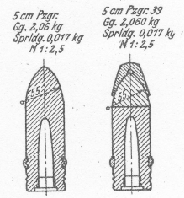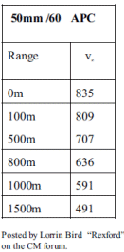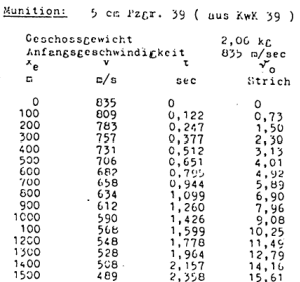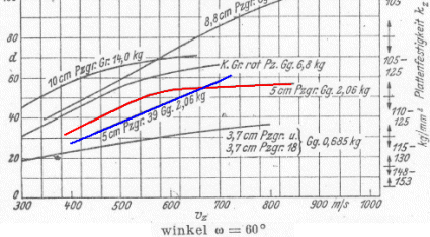|
German 50mm AP |
||


|
I wanted to make an accurate ballistic model of the German 50mm guns. Particularly that of two armor piercing shells. The first is an early uncapped APHE ogive shaped shell noted as Pzgr.Gr. The second is a later capped APHE shell noted as Pzgr. 39. Both weigh the same 2.06 kg. |
||

|
Fig 1. |
||
|
3.). It would be nice is the Rexford data was for the early uncapped shell as the other is clearly for Pzgr. 39. But, that is speculation. |
||


|
Fig 2. |
||
|
Fig 3. |
||

|
Fig 4. Source Panzer world and here |
||

|
Fig 5. |
||
|
pletely different. I'm not going to say this is an error but it would be the only shell where the early version is more powerful at some ranges than the improved Pzgr. 39 shell that replaced it. |
||
|
Awaiting more info. |
||
|
*Normalization refers to the creation of shifted and scaled versions of statistics, where the intention is that these normalized values allow the comparison of corresponding normalized values for different data sets in a way that eliminates the effects of certain gross influences. |
||

